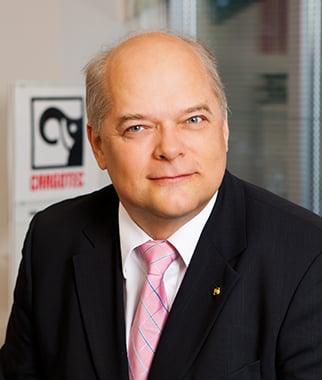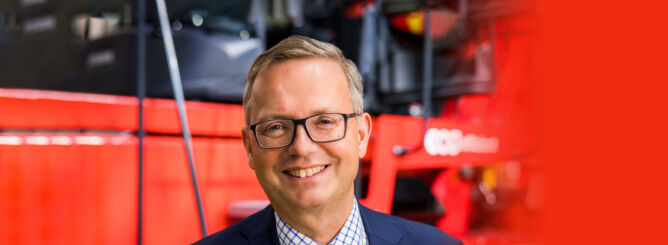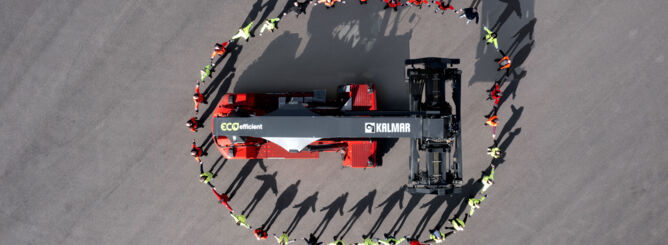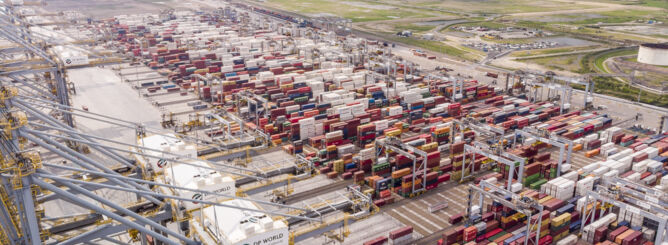Container terminals are not isolated islands
Even though the container shipping industry is a big business worldwide, let's face it – it's still a niche market in the global scheme of things. This means that our industry needs to copy the best technological practices from other fields. Successful, technically advanced solutions should be replicated in other applications to benefit the sector as a whole.
Terminals are not islands unto themselves. We are always part of a larger logistical chain, so we need to gather the best ideas and proven solutions from others' successes. We need to copy with pride – or with brains, as somebody commented – instead of trying to develop everything by ourselves and ending up late to the market with our offering.
We need to gather the best ideas and proven solutions from others' successes.
 With global equipment bases of some tens of thousands of machines, our market is several orders of magnitude smaller than, for example, the truck manufacturing industry. Resultantly, it makes no sense to develop and/or manufacture our own engines, driveline components, tires, or electric motors. We can let the high-volume players design the bulk components and build our own specialised equipment around them.
With global equipment bases of some tens of thousands of machines, our market is several orders of magnitude smaller than, for example, the truck manufacturing industry. Resultantly, it makes no sense to develop and/or manufacture our own engines, driveline components, tires, or electric motors. We can let the high-volume players design the bulk components and build our own specialised equipment around them.
Utilising what is already there
It is virtually certain that at some future date, all container handling machines will be fully electric. But the driving factor behind this development will not be demand from container terminals for electric-powered equipment. It will be the adoption, on a massive worldwide scale, of zero-emissions drive technology in public transport, trucks, road vehicles and other applications with equipment volumes that are hundreds or thousands of times larger than those of our industry. This is what will push the development of the required technology and infrastructure, and ultimately bring the cost-benefit equation to a point that makes the adoption of all-electric technology inescapably compelling for terminals.
Fast-charge technology holds tremendous promise for container handling equipment, but the truck and bus industries are already way ahead of us in this game, so we should always consider what kind of solutions there are already available that we could utilise for our customers’ benefit. As a technology leader we actively follow the development on the market to be able to adapt our offering accordingly and to combine technologies to work best in our specific environment. The mass-market drivers are not limited to hardware. Artificial intelligence and software-based process optimisation will also be subject to the same kind of development.
Getting ahead the game will require new approach from us. While other industries are opening their data to developers who can add value with it, we cannot just sit and keep our data closed. We must embrace the possibilities of true industry collaboration.
Legislative demands drive development
Safety and sustainability are two of the key measures that are leading the innovation process, and other industries are hard at work solving questions that are very similar to the ones we are working on at today's automated container terminals. For example, while we are busy developing the next generation of automated container handling machines, various companies are working on autonomous cars and trucks.
Again, we are not an island, so we need to follow very carefully the legislation that is developing around automated and autonomous road vehicles. Due to obvious factors of scale and public interest, it is inevitable that this legislation will end up influencing how we deploy automated container handling equipment, instead of the other way around.
Copy with pride, today
It is often said that the container handling business is at least a decade or two behind other industries in the adoption of automation. This may be true, but on the other hand, the world we live in now is not the same world that the automotive industry faced in the early days of industrial robotics. We may be late to the game, but we are also adopting automation in the time of an unprecedented convergence of digitalisation, wireless connectivity, artificial intelligence, machine learning, sensoring, Big Data and completely new ways of doing business.
This opens up a vast range of possibilities that were not available to the early adopters in industrial and process automation. To take the next step in the development of our field, we need to look to other, higher-volume industries to see how they have solved the same issues we are facing, not in the past, but today. And let's not wait until tomorrow to start doing it.
Ismo Matinlauri
VP, Solution Sales and Marketing
Kalmar



